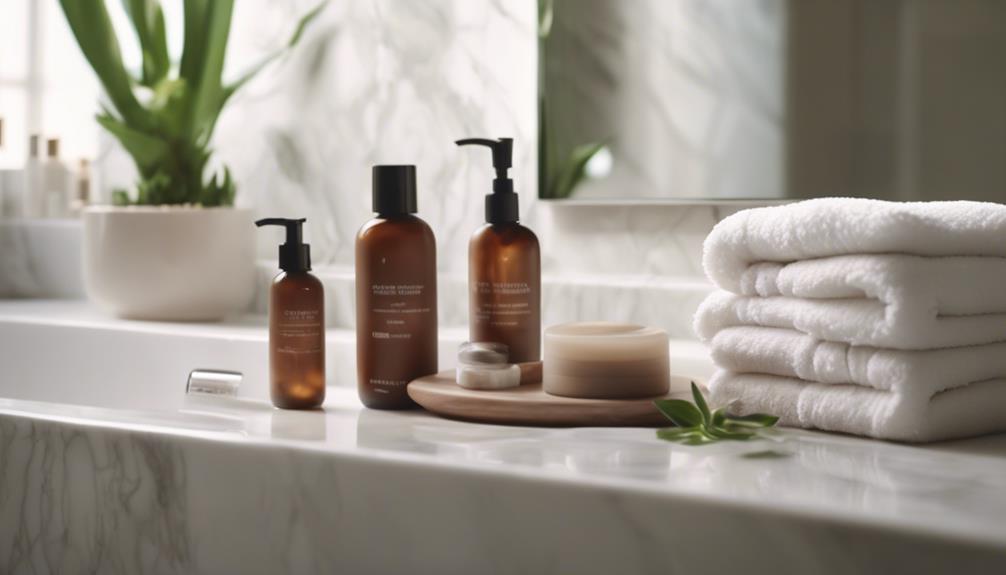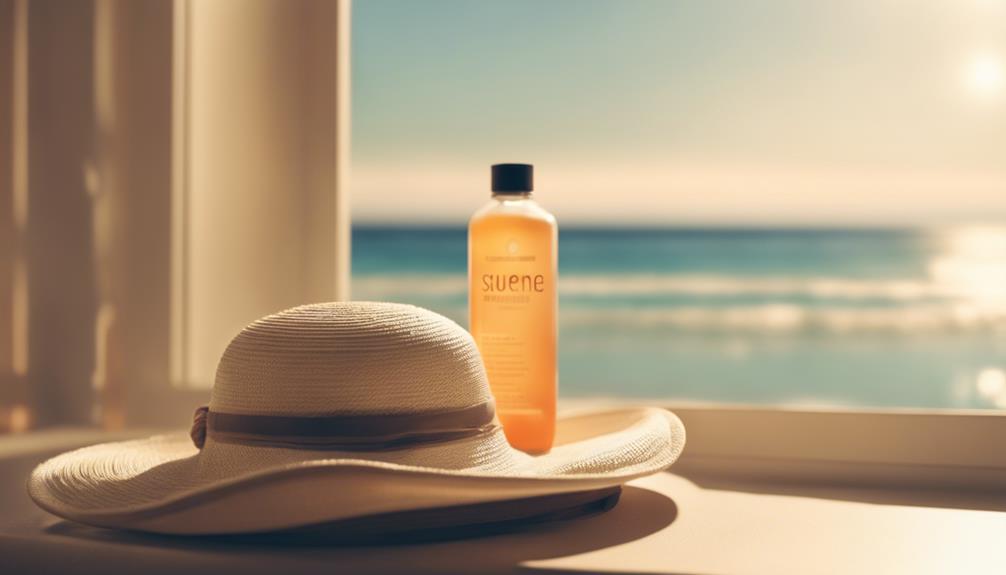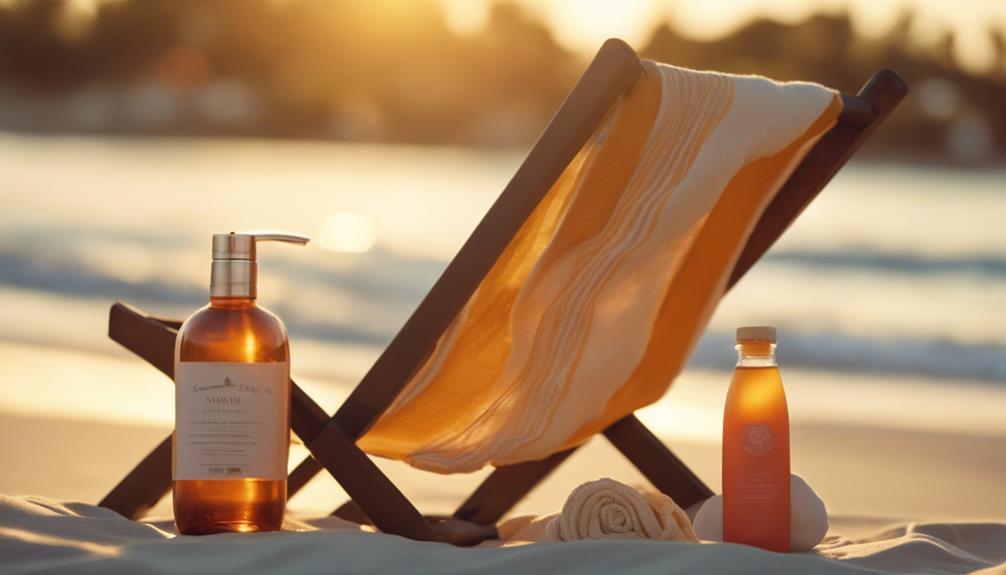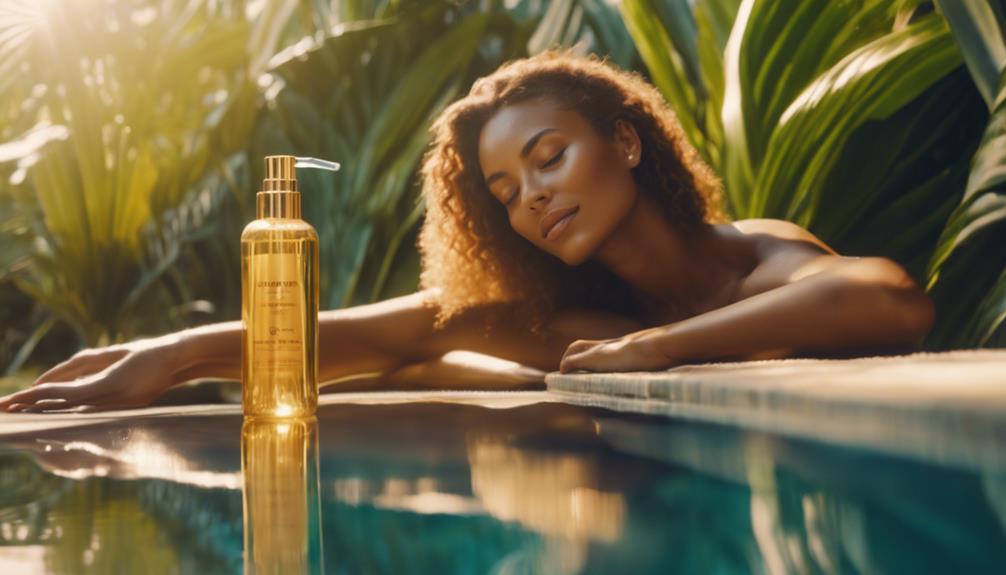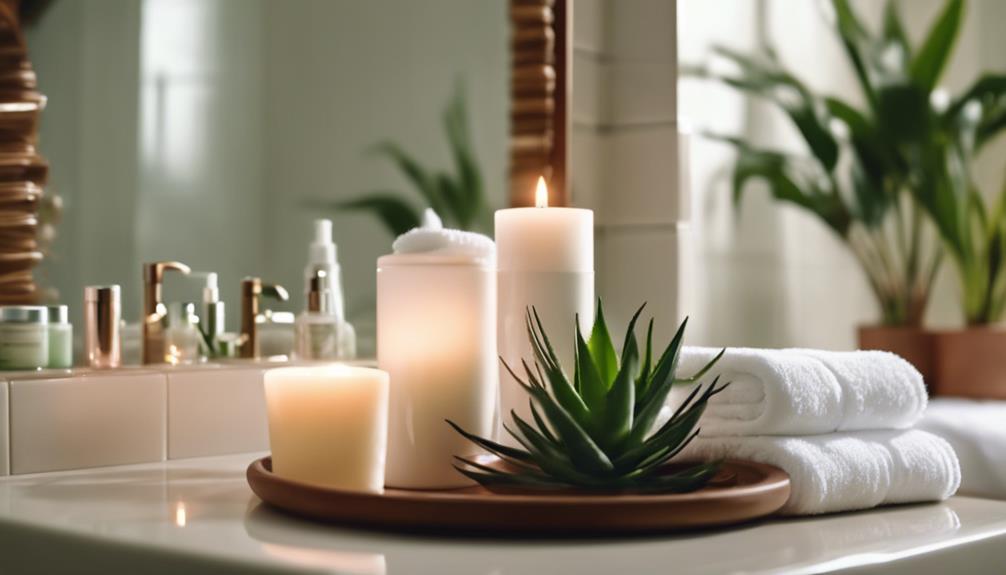To master your skin prep for tanning success, start by exfoliating your entire body 24 hours before you tan. Use a loofah or body brush to remove dead skin cells, especially on rough areas like elbows and knees. After that, cleanse your skin thoroughly and apply an oil-free moisturizer to keep it hydrated. Choose a tanning lotion suited for your skin type for the best results. Don't forget to protect your eyes with UV-blocking goggles and your lips with broad-spectrum SPF lip balm. Following these steps will set you up for a stunning tan, and you'll discover even more tips ahead!
Key Takeaways
- Exfoliate your skin 24 hours before tanning to remove dead skin cells for a smoother application.
- Use an oil-free moisturizer to hydrate your skin, applying it at least 30 minutes before tanning.
- Choose a tanning lotion suited for your skin type to enhance color development and ensure an even tan.
- Protect your eyes with UV-blocking goggles and your lips with broad-spectrum SPF lip balm during tanning sessions.
Importance of Skin Health
Maintaining healthy skin is essential for achieving a beautiful and even tan, as it not only enhances your tanning results but also protects your skin from potential damage. Healthy skin acts as a barrier against UV rays, reducing the risk of burns and premature aging.
To start, consult your physician if you have any skin concerns or are on medications, ensuring your tanning process is safe.
Prioritize hydration by drinking plenty of water and using a good moisturizer, as this keeps your skin supple and ready for tanning.
Remember, the overall condition of your skin can greatly impact how well the tan develops.
Effective Exfoliation Techniques
To achieve an even tan, you should incorporate effective exfoliation techniques that remove dead skin cells and promote a smooth surface.
Start by exfoliating your entire body within 24 hours before tanning. Use a loofah or body brush to scrub away any buildup.
Choose an exfoliant that suits your skin type to minimize irritation. You can opt for physical scrubs or chemical exfoliants containing alpha or beta hydroxy acids.
Focus on rough areas like elbows and knees, as they tend to absorb more tan. Rinse thoroughly to guarantee no residue remains.
Choosing the Right Moisturizer
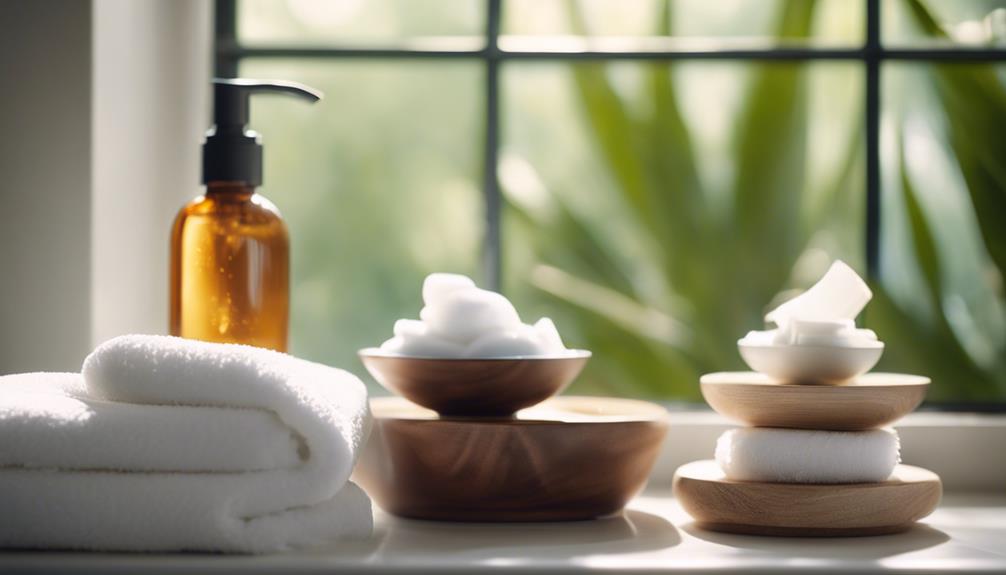
When selecting a moisturizer for tanning, look for an oil-free formula that hydrates your skin without leaving a greasy residue. This guarantees your skin remains smooth and even, perfect for tanning. Here's a quick comparison of moisturizer options:
| Moisturizer Type | Benefits |
|---|---|
| Gel-Based | Lightweight, absorbs quickly |
| Cream-Based | Deep hydration, ideal for dry skin |
| Lotion-Based | Balanced moisture, versatile for all skin types |
Using the right moisturizer not only prepares your skin but also enhances the tanning process. Remember to apply the moisturizer at least 30 minutes before tanning for best results. Keeping your skin hydrated guarantees a radiant and even tan, making your tanning experience a success.
Preparing for a Flawless Tan
Getting your skin ready for a flawless tan involves more than just moisturizing; it requires a careful routine to guarantee even coverage and vibrant results.
Start by exfoliating your entire body 24 hours before tanning, using a loofah or body brush to slough off dead skin cells. This step assures your tan applies smoothly.
Next, cleanse your skin thoroughly by removing all makeup and jewelry to prevent any uneven patches.
After exfoliation, apply a deep, oil-free moisturizer to hydrate your skin, creating an ideal canvas for tanning.
Choosing the right tanning lotion tailored to your skin type will enhance your results.
Following these steps will help you achieve that beautiful, even tan you desire.
Essential Eye and Lip Protection

Protecting your eyes and lips during tanning is essential for maintaining overall skin health and preventing damage from harmful UV rays. Always wear protective eyewear like goggles to shield your eyes from UV exposure. Your vision's long-term health depends on it! For your lips, apply a broad-spectrum SPF lip balm to prevent sunburn and dryness.
| Protection Type | Description |
|---|---|
| Eye Protection | Use UV-blocking goggles |
| Lip Protection | Apply SPF lip balm regularly |
| Tanning Frequency | Wear protection every session |
| Lip Moisturization | Reapply lip balm every hour |
| Eye Care | Check for irritation post-tan |
Prioritizing these steps guarantees a safe and enjoyable tanning experience.
Frequently Asked Questions
How Often Should I Tan for Optimal Results?
For ideal results, you should tan about once a week, allowing your skin time to recover between sessions. Listen to your body, and adjust frequency based on how your skin responds to tanning.
Can I Use Self-Tanner Before Tanning Beds?
Did you know that 90% of skin aging comes from sun exposure? Using self-tanner before tanning beds isn't recommended; it can cause uneven results. Focus on proper skin prep for a flawless, sun-kissed glow.
What Should I Do if I Get Sunburned?
If you get sunburned, stay hydrated and apply aloe vera or a soothing lotion. Avoid further sun exposure, wear loose clothing, and let your skin heal. If pain persists, consult a doctor for proper treatment.
Are There Any Age Restrictions for Tanning Beds?
Tanning beds can feel like a tempting sun-kissed dream, but age restrictions do exist. Most places require users to be at least 18. Always check local regulations to verify you're tanning responsibly and safely.
How Long Should I Stay in a Tanning Bed?
You should start with 5 to 10 minutes, especially if you're new to tanning beds. Gradually increase your time as your skin adapts, but never exceed recommended limits to avoid burns and skin damage.
Conclusion
By taking the time to prep your skin, you're setting yourself up for tanning success.
For example, think about Sarah, who always struggled with uneven tans until she started exfoliating and moisturizing properly. Now, she boasts a smooth, golden glow that lasts.
Prioritizing skin health not only enhances your tan but also keeps your skin looking its best.
So, follow these essential steps, and watch your tanning results transform!
